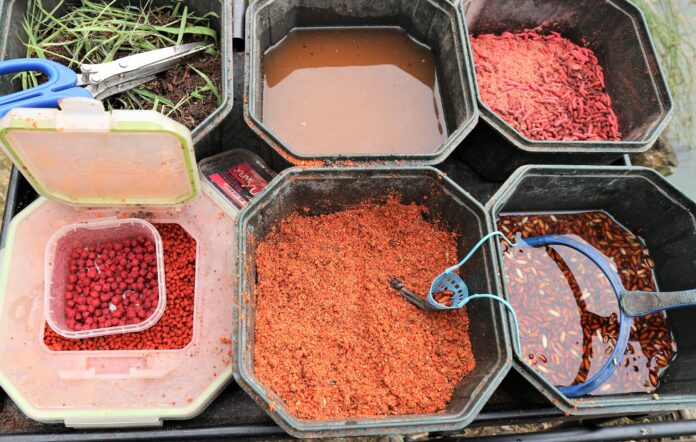BREAD PUNCH
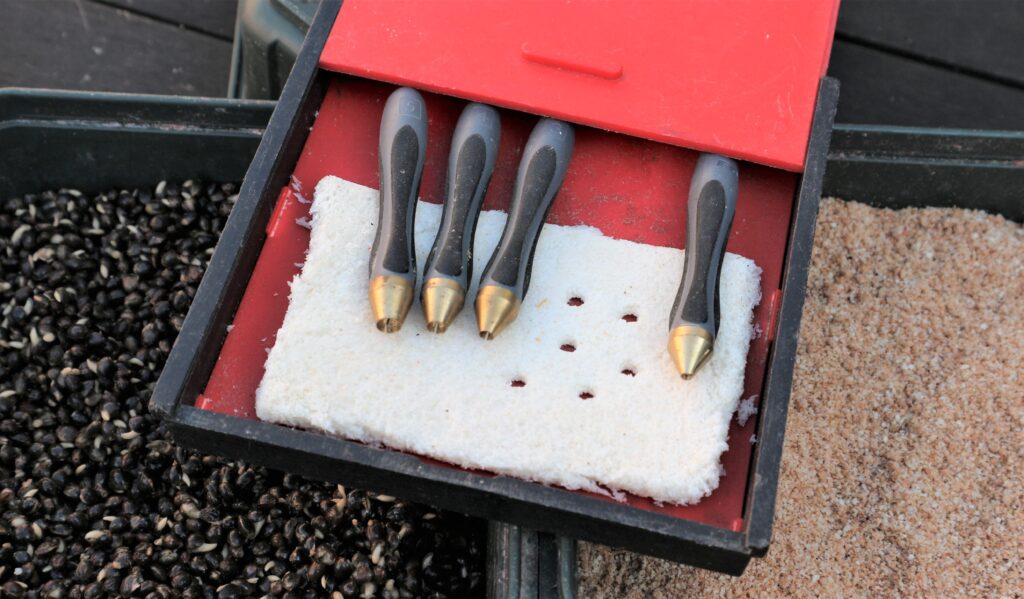

Punched bread doesn’t work everywhere, but when you do find a venue that responds to it, this simple bait can make a huge difference. It’s a great way of bringing clear water swims to life, especially when the normal stuff you take isn’t producing anything. There’s something roach, in particular, can’t ignore when you feed cloudy breadcrumb or liquidised bread. Bites often occur instantly, using small compressed pellets of fresh white bread over these types of feed. Small hooks, down to a fine wire size 18 or 20, help to bring bites all day, stepping up to larger punches and more business-like tackle for bigger fish. Punch scores well with pole, waggler and river floats, along with various groundbait feeders, particularly cage designs. Apart from roach, this bait works well for rudd, skimmers and hybrids. A top tactic is starting with punch to wake up slow swims, later switching over to hemp and possibly tares to sort out better-sized fish.
RED MAGGOTS
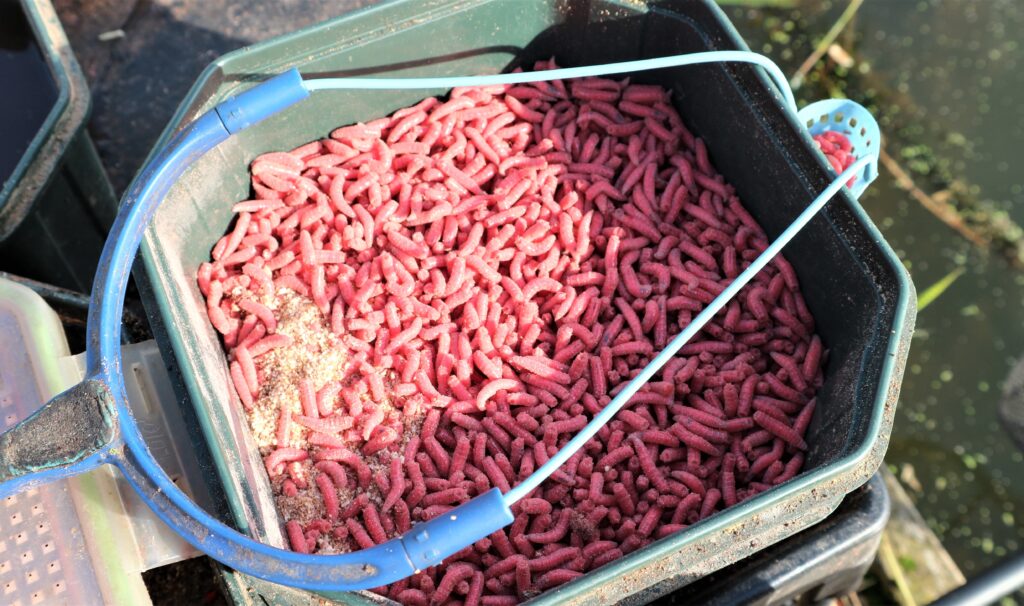

Red maggots outsell all other colours in vast quantities. I catch on them all the time and yet hardly ever feed any. It’s amazing how often, when I’m using other baits, putting red grubs on the hook pulls an instant response. The only time I tend to put a few reds in is to get swims kick-started. The rest of the time I prefer to use casters, hemp or pellets to attract and hold fish in front of me. In the case of the latter three inert baits, having something on the hook that moves when fished over them, is a great way of provoking interest. Although I don’t use many reds, I still buy a couple of pints when I shop for bait. They turn into superb casters that give off a deep red glow that most silver fish can’t resist. It’s also worth freezing or drowning a few red maggots for skimmer and bream sessions. Combined with feeder tackle, dead reds won’t attract so much attention from small perch as hook bait, plus they don’t bury in silt when used as feed.
PINKIES
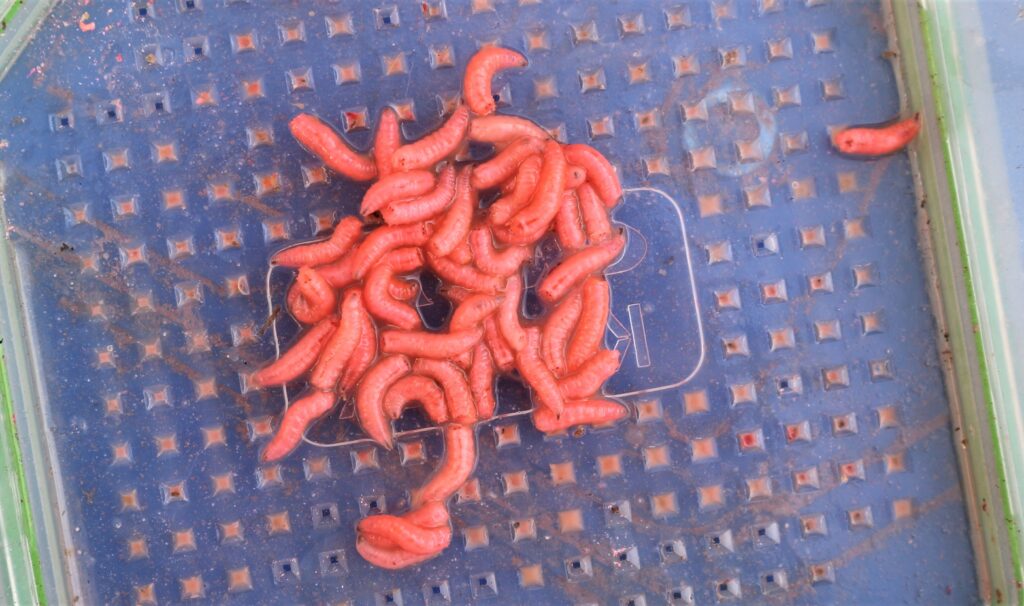

These half-sized maggots used to be part of most match anglers’ bait menu, before commercial fisheries hit the scene. But with the pellet revolution, pinkies have become less popular. However, now anglers have filled their boots on the bagging pools, some are starting to drift back to old haunts like canals, drains and reservoirs. On these venues, mixing a few fluoro or red pinkies in with groundbait, or loose feeding some close in, often pulls quicker action. This helps while waiting for main methods to get going. Also, when big fish are in a picky mood, a few pinkies mixed into groundbait will often set them feeding. This bait can work well on the hook in that kind of situation too, especially for bream, roach and skimmers. When bites are being missed on big maggots, two or three pinkies on a size 18 or 20 can be the answer. On hard venues, red pinkies are the closest bait to natural bloodworm when it comes to conjuring bites.
SQUATTS
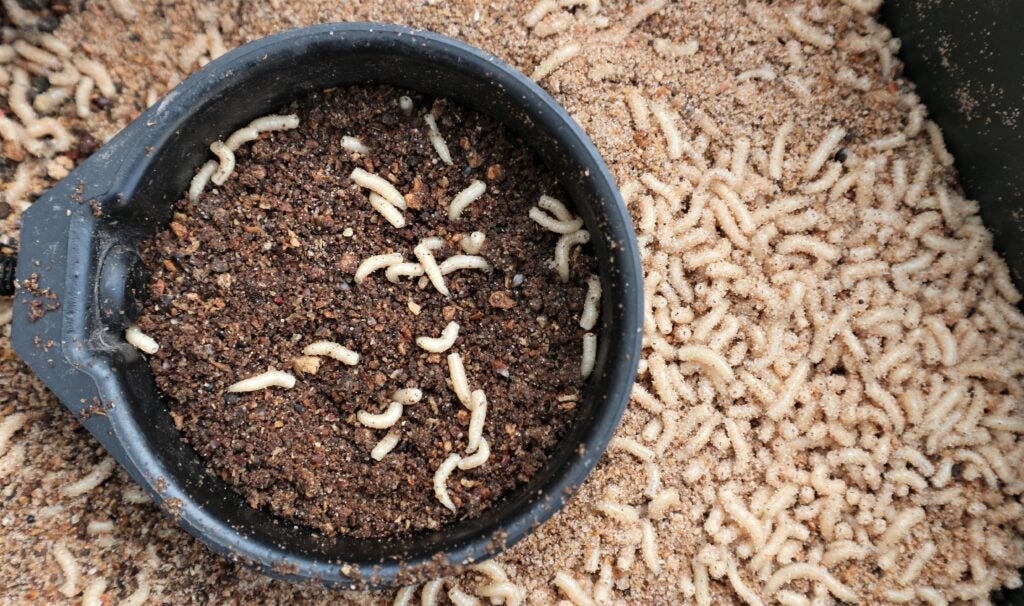

Squatts have nearly disappeared off the angling scene. Back in the days of big canal competitions, these tiny feed maggots were the main line of attack for many match anglers. It was normal to take two or three pints of squatts to even the hardest venues, feeding good helpings in groundbait, or spraying bigger quantities with a catapult. These tiny maggots got fish like roach, perch, skimmers and gudgeon feeding like mad. It was possible to buy red squatts too, which were a great alternative to bloodworm and jokers, on venues where those baits were banned. The red version worked better for me on heavily coloured waterways like the Oxford. We didn’t just use squatts on the pole either. They worked brilliantly loose fed with a powerful catapult, in combination with small canal-style wagglers. The trick was to spray this bait over to the far side, watching for swirling fish, which told you when it was time to move your attack over there.
MICRO PELLETS
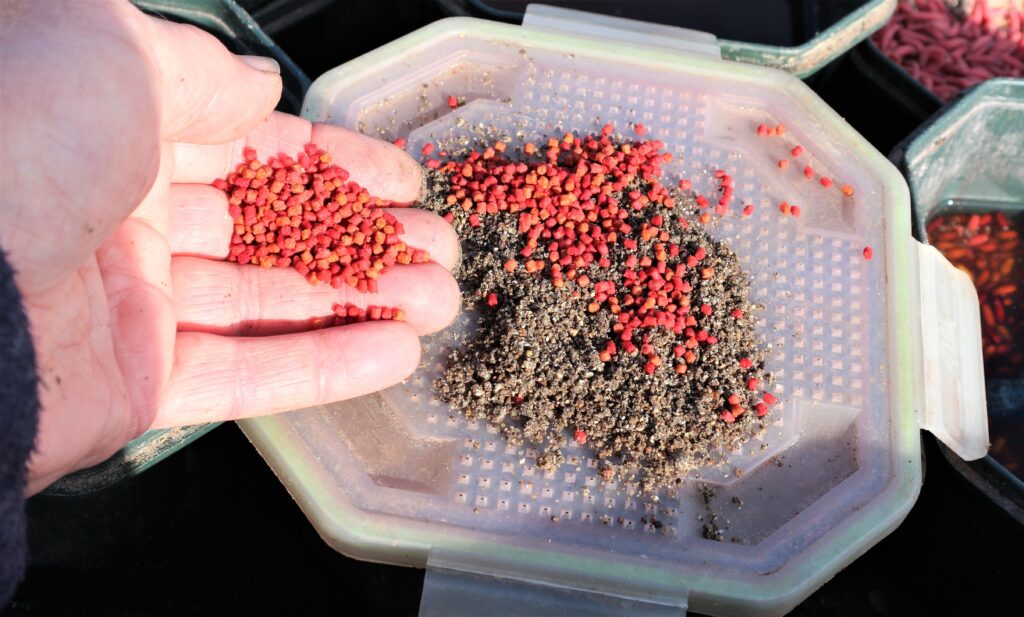

A modern way of kick-starting swims and waking the fish up is to feed micro pellets. On many commercial fisheries and some wild venues too, feeding micro pellets has a similar effect to how baits like bloodworm, jokers, squatts and pinkies used to work. I particularly like red and orange micros which, apart from carp, set bream, skimmers, crucians and tench into feeding mode. You can cup these in neat with a pole, mix them in groundbait, use dampened ones to grip in pellet feeders, or mould them around flatbed method designs. In the winter, when using dark groundbait, I like to add in a few red micros to introduce a bit of colour. Big roach, skimmers and slab-sided bream love this. Micros are also a brilliant substitute for groundbait, when the latter isn’t allowed, which can be the case on some commercials. It’s okay to add baits like casters, pinkies and chopped worm to micro pellet feed, similar to how you would with groundbait.
SOFT HOOKERS
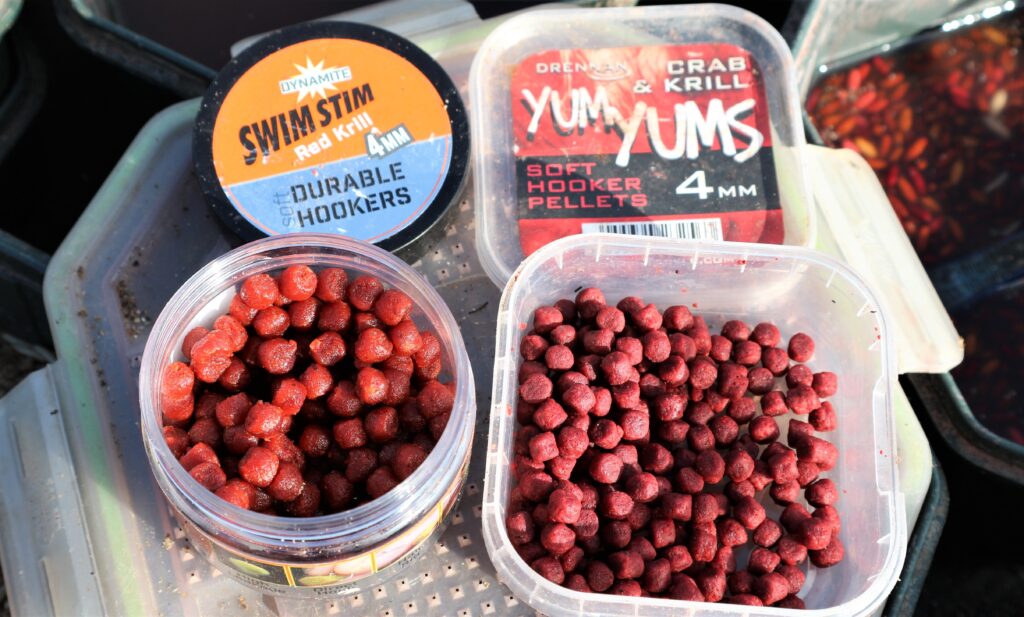

I always keep a few tubs of hooker pellets in my carryall. I like having these in reserve as change baits. It’s amazing how many times sticking a soft pellet on the hook brings a bonus bite, even when not actually feeding any. Classic examples are when fish become preoccupied with groundbait, ignoring any freebies it might contain. But put a soft pellet on the hook and it fools groundbait guzzlers every time. Off-the-shelf hook pellets are fine in the warmer months, when fish are feeding well and highly active. However, when bites are hard to come by in the winter, I don’t think you can beat preparing your own soft expanders. You can almost bury a hook inside these and due to their lightness, fish suck them in more positively. I also think the way these delicate baits sink slowly to the bottom and waft up with minimal agitation, stimulates interest. Pumping your own hookers helps get them right, so they are super-soft and slow to sink.
HEMP SEED
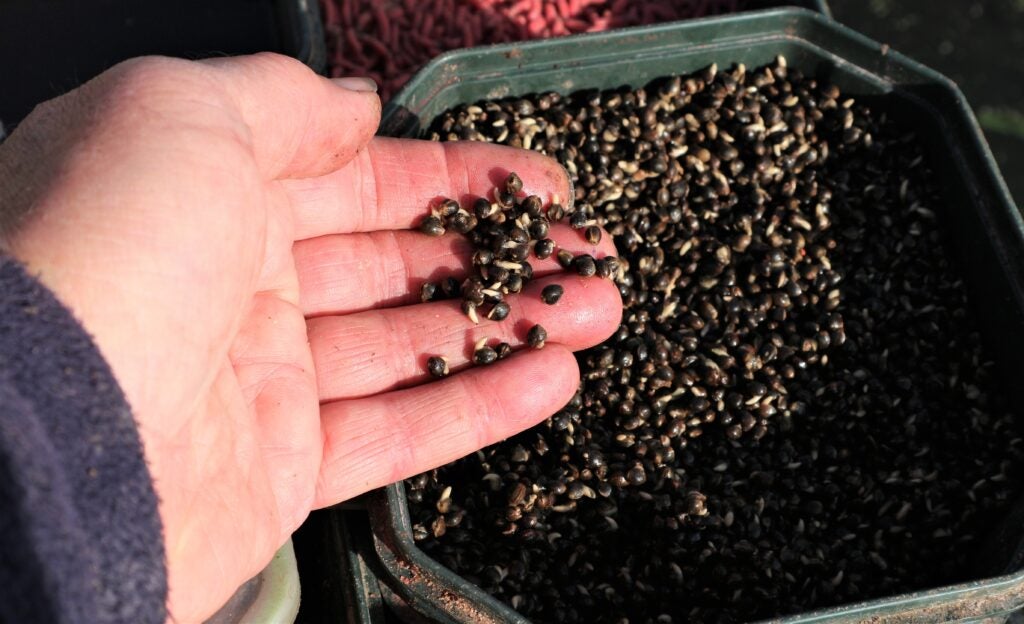

Although far from forgotten, cooked hemp is mainly used by big fish anglers in their spodding mixes these days. Good old terms like “hempseed corner”, which referred to a popular area on the tidal Thames many years ago, are long gone. That was all about float fishing the magic seed for roach and dace, something few anglers do now. Possibly this is thanks to everyone having less time and wanting instant results. It takes patience and a considerable amount of effort to get hemp working. If you can pull it off, feeding small amounts of this cooked seed regularly can stir even the wisest of fish into a feeding frenzy. When that happens, another old favourite, tares can come into play as a hook bait. Softer and bigger tares are easier to hook than hemp, tending to pull interest from better quality fish. Hemp is a brilliant feed bait, which can be used in combination with a wide span of other favourites, such as maggots, casters, worms and sweetcorn.
CHOPPED WORM
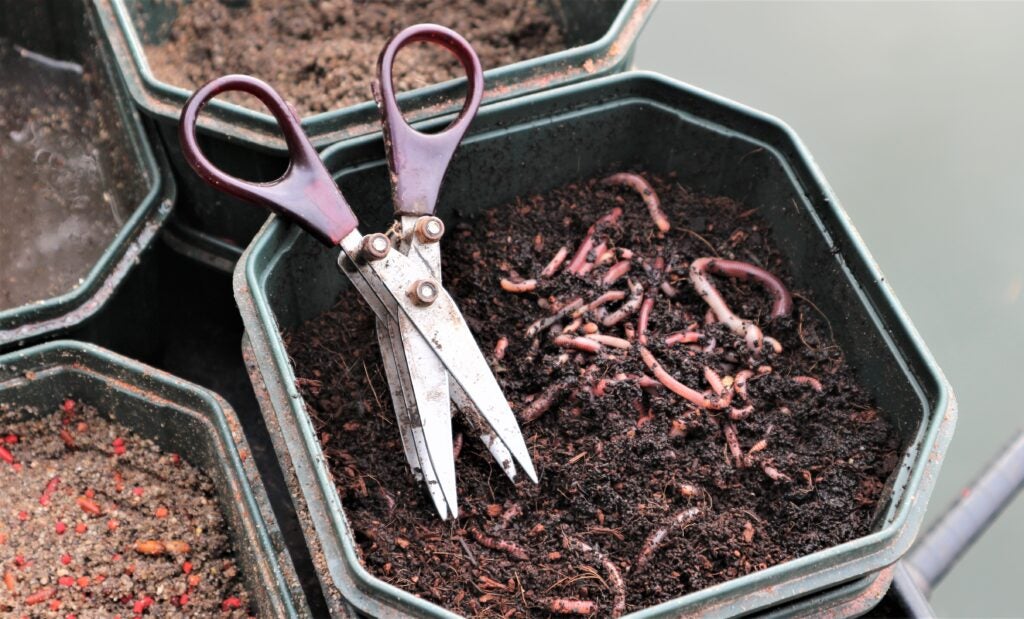

Chopped worm is widely regarded as the best activator to wake up even the dourest of fisheries. Perch home in on it instantly, followed closely by roach, skimmers and bream. Carp and chub are also suckers for chopped worm and all the resulting rich juices, which blend in perfectly with baits like casters, maggots, pellets and groundbait. The only thing you need to watch with worm is how you feed it. The activating effect only tends to work two or three times during a session. Overdo chop feed and it can kill swims stone dead. A gentler approach is to add some liquid worm into your groundbait and pellet mixes, or you can now buy groundbaits pumped with worm meal. A good way of catching big perch with worms, is to target small fish first. Once these are feeding in your swim, a heavier rig with half a lobworm or big segment of dendrobaena – on a size 10 hook – will tempt any large perch that have been attracted by all the activity.
PASTE
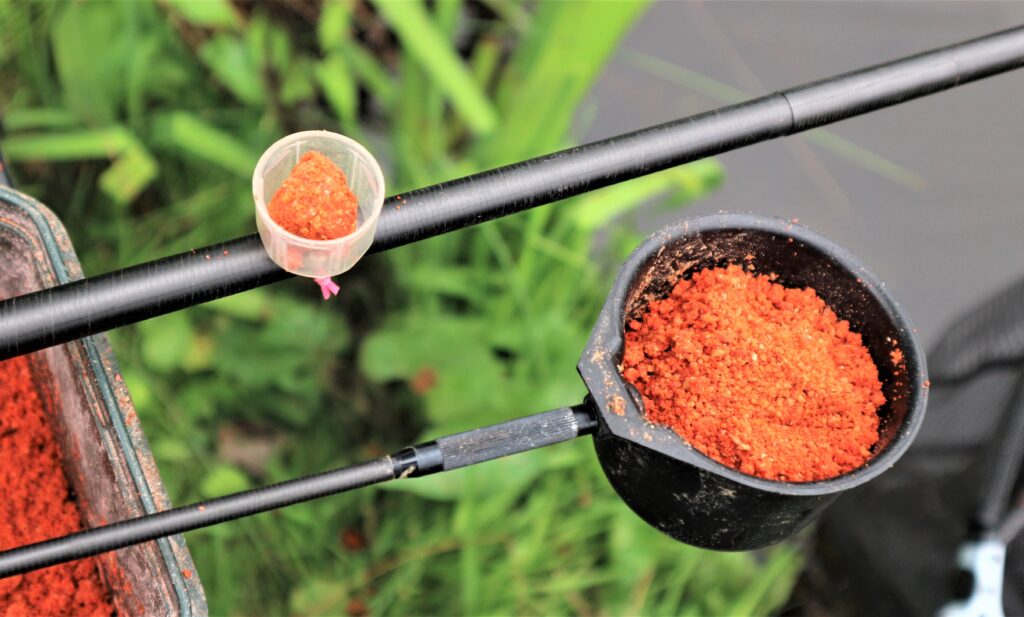

Paste made from fishmeal groundbait can be a big winner, especially on hard-fished commercials. My favourite mixes are Dynamite Krill and Bait Tech Super G Green. In both cases, if groundbait is allowed, I mix these recipes up roughly, deliberately producing a lumpy consistency. I cup the resulting feed in loose and it holds fish for ages, not just carp, but also tench and skimmers. If groundbait isn’t allowed I use the same rough mix for hook bait, slightly wetting it, to form dollops that are moulded around a big wide-gape hook. Although soft paste is mainly used with pole tackle, it also works okay with waggler gear fished down the margins. I prefer using running line on venues where carp run big, because very often they charge out into open water like trains. Even super-stretchy pole elastic can’t always cope with this and the hook pings out. Not so with waggler tackle, where the soft bait needs to be gently swung out underarm.
CASTERS
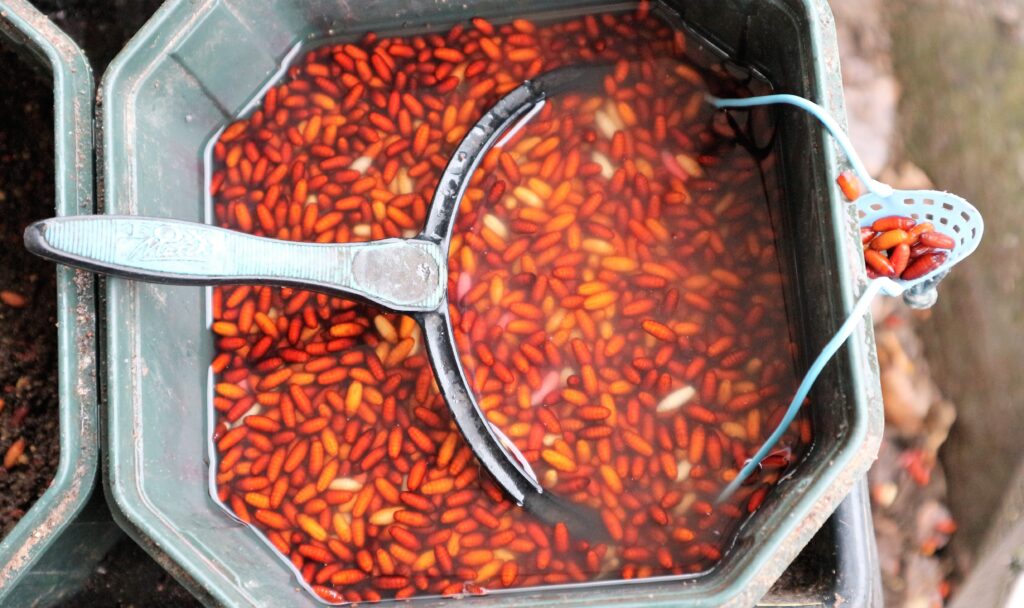

I’ve always preferred a caster attack, compared with relying on maggots. It takes a bit longer for casters to stir different types of venues into responding, but once they do, the fish tend to be better quality than maggots produce. Although feeding casters, I will try lively grubs on the hook at the start of sessions when they can produce bites quicker, even if none are being fed. But my reliance on fresh, crispy shells goes back a long way to my early canal fishing days. Back then there were some cracking squatt anglers, who were impossible to keep up with if you tried playing them at their own game. The only way I could compete with them was to catch a bigger stamp than they were, on casters. This bait often catches me extra-large bonus fish, which have wised up and probably wouldn’t go near a maggot. To my way of thinking, casters are as natural an offering as you can get, next to all the different types of worms that are used in fishing.
TYPICAL MENU
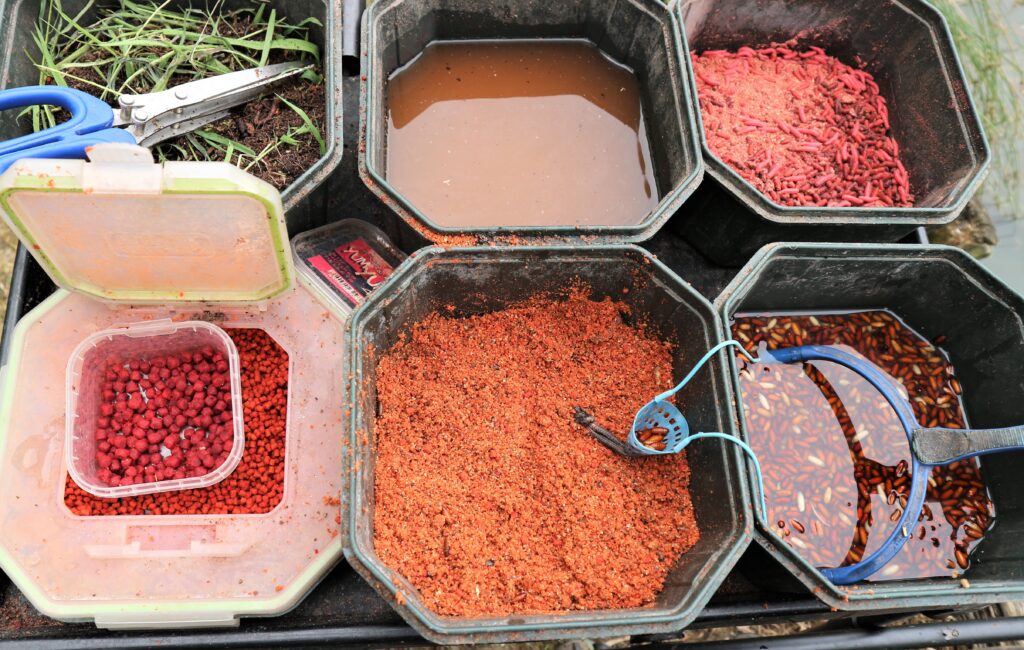

I like to take a good selection of baits with me, particularly so if I don’t know the venue I’m visiting. I can work through a menu to find out what the fish want. This might entail starting with groundbait laced with a bit of everything, such as chopped worm, casters, a few red maggots and some micro pellets. By experimenting with hook baits, I will soon discover what attracts the most bites, and then consider if I need to change route, either taking the natural path or a pellet-orientated one. I like to keep my worms super-fresh and lively by adding some greenery to the bait box they are stored in. I also cover my casters in water, once they have reached a dark shade, to prevent them from turning into floaters. I keep a bait box full of water handy on my bait table, which is useful for keeping my hands clean, so I don’t get groundbait and fish slime all over the rod or pole I’m using. I can also quickly sprinkle more moisture onto pellets or groundbait.










